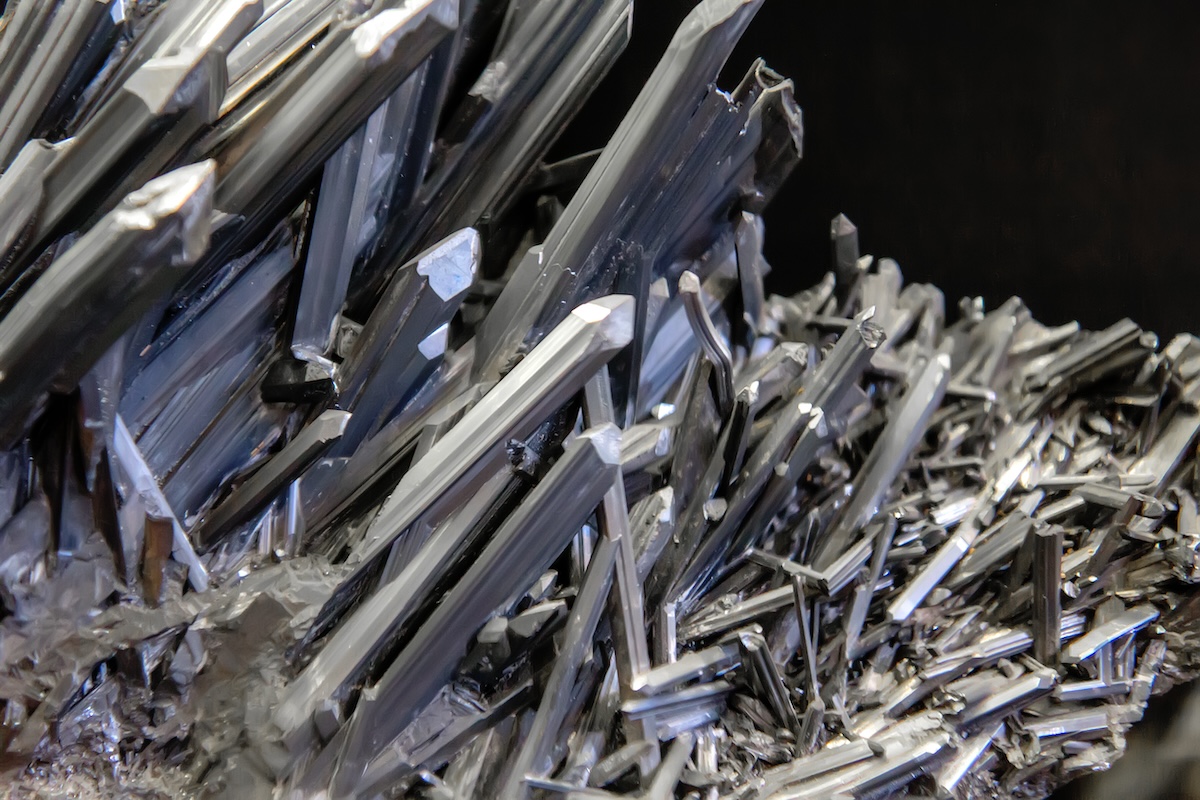Antimony hardly features in everyday business chatter. Yet when it comes to the debate about supply chain resilience and national security, this critical mineral is a hot topic. From batteries and semiconductors to munitions and night-vision equipment, antimony underpins both commercial industries and national defense capabilities worldwide.
The numbers tell a compelling story. Global demand for antimony reached approximately 160,000 metric tons in 2023, while mine production delivered just 83,000 metric tons. This staggering 50% supply deficit is reshaping how governments and businesses think about supply chain resilience.
When Two Players Controls the Game
China and Russia are dominating forces in the antimony industry, a vulnerability highlighted by the disparity between strategic reserves and annual consumption. China’s reserves are estimated at 640,000 tons, which amounts to approximately 12 years of consumption. Russia stands at 350,000 tons, the second largest in the world. Estimates suggest that this could meet up to 80 years of consumption. In stark contrast, the U.S. national stockpile contains just 1,110 tons of antimony, which covers barely 18 days of the country’s annual consumption.
From a production perspective, the situation is equally unstable. Chinese companies control nearly half of global mining output and over 80% of processing capacity, including refining of antimony’s raw ore, Stibnite (Sb). This level of concentration would be remarkable in any industry, but it’s especially significant when the mineral in question is essential for defense equipment, semiconductors, and solar panels. The challenge is that nations with robust Environmental Social Governance (ESG) policies have curtailed domestic mining and refining activities. As a result, the global supply of antimony is limited despite ample deposits.
The Antimony Imbalance
Nations with abundant reserves consume relatively little antimony, while major consumers like the U.S. maintain virtually no strategic buffer. There’s a common misconception that Western refining capacity is the primary constraint. In reality, it’s securing reliable raw material supply. Three major facilities outside China have substantial processing capability:
- Oman Strategic and Precious Metals Processing (SPMP): Designed to process 40,000 metric tons annually but suspended operations in 2024 due to inadequate ore supply.
- Belgium’s Campine NV: Operating capacity of 12,000 – 18,000 tons per year, focusing primarily on antimony trioxide production.
- US Antimony: Operating North America’s only antimony smelters with 6,000 tons of annual capacity.
Combined, these facilities can process over 60,000 tons of antimony annually, more than double the U.S.’ annual consumption of 24,000 tons. However, all three currently operate well below capacity because they cannot economically secure enough raw material in the open market to maintain viable operations.
Market dynamics have shifted dramatically since China’s export ban in 2024, following earlier restrictions on exports to other Western nations. Since the restrictions took effect, domestic Chinese antimony prices have dropped, and one of their largest facilities closed due to reduced export demand. Meanwhile, prices for antimony shipments reaching Western facilities have jumped significantly. Mining operations outside China will need time to scale up production to meet this new pricing environment.
New Challenges Create New Opportunities
Sources of raw antimony ore outside of China and Russia are becoming one of the most valuable links in the global supply chain. Nearly every player in the industry is exploring ways to increase mining output in an effort to rightsize the structural imbalance between global supply and demand. New initiatives include:
- Government support to accelerate development timelines. Both the US and UK have established Strategic Mineral working groups focused on fast-tracking deregulation and providing tariff waivers to incentivize domestic supply development and protect against supply disruptions.
- Strategic partnerships to reshape the industry. Refiners operating below breakeven capacity are now competing aggressively for long-term off-take agreements with miners, creating opportunities for forward sales and project financing that didn’t exist just two years ago. Mining companies will seek to monetize the opportunity to get their ore to market. Several companies have been identified by refiners as the most attractive “dance partners” to secure agreements with.
- New global projects will come online. In the Balkans, Australian-based Pela is advancing the Kristov Dol Mine project. It could potentially contribute 7% to global antimony supply, with a 15-year mine life. In Slovakia, Toronto-listed Military Metals recently acquired two antimony projects, including one with a historical resource estimate of 415,000 tons. North American developments include Perpetua Resources’ Stibnite Gold Project in Idaho and Critical One’s acquisition of a project called Howells Lake in Ontario, Canada.
These initiatives signal growing recognition of antimony’s strategic importance. But it won’t happen overnight. Bringing new antimony mining capacity online typically takes 3 to 7 years, depending on factors like permitting, infrastructure, funding, and geopolitical stability. Fast-tracked brownfield sites or restarts of previously operating mines may come online sooner — possibly within 1 to 2 years — but this would be the exception not the rule.
Strategic Implications for Business Leaders & Investors
Antimony represents a strategic opportunity at the intersection of security and industrial necessities. Its applications in defense, energy, and industrial sectors will drive a more resilient demand profile than the more publicized battery metals. At the same time, the fundamental supply-demand imbalance and Chinese over-concentration make it attractive for risk-on investors.
The key is recognizing that this isn’t just another commodities play. It’s an opportunity to participate in the fundamental reshaping of critical mineral supply chains, with the backing of government policy and the urgency of a national security initiative. In a world where supply chain resilience has become as important as cost efficiency, antimony represents exactly the kind of strategic asset that sophisticated investors should be evaluating today.
To learn more about strategic minerals, visit our Sector Overview.


